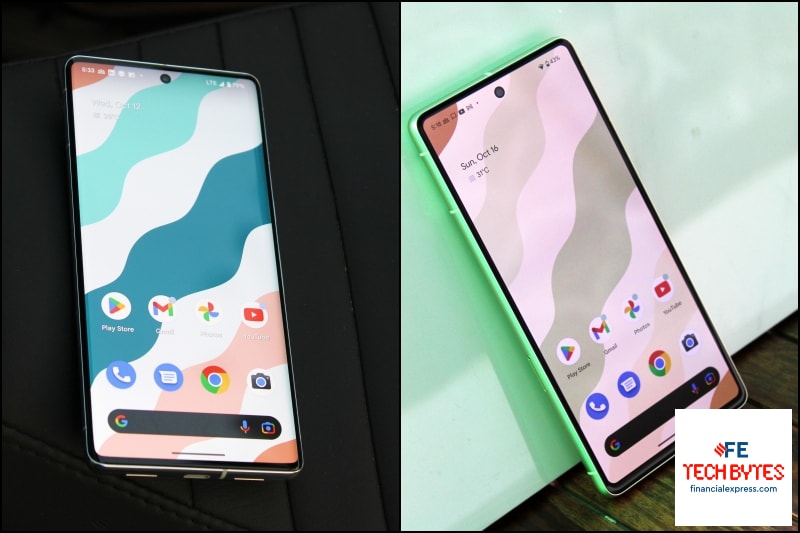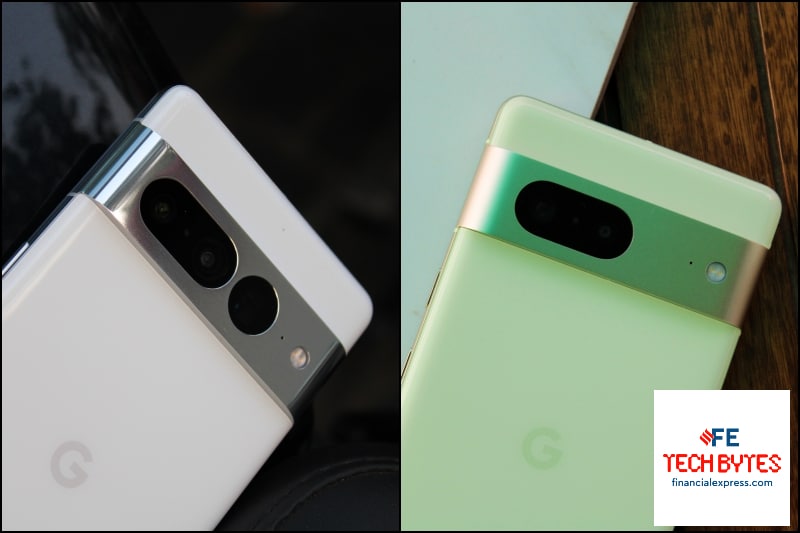The Pixel 7 and Pixel 7 Pro are not your run-of-the-mill smartphones but they are the smartest smartphones that money can buy today. Technically, any mobile device with a touchscreen that can make a phone call and connect to the internet is a smartphone. What makes the Pixel 7 and 7 Pro so special— among the current lot— is their feature set.
For those unaware, the Pixel 7 and Pixel 7 Pro are the quintessential Google phones which is to say, they are coming straight from the creators of Android. That doesn’t necessarily mean anything— nor does it guarantee that they would be great and/or successful— but they are always interesting to look at. Every new Pixel— previously Nexus— almost always manages to spark debate and draw substantial buzz on social media. Everyone wants to see how Google sees Android and how different it can be when an original device manufacturer like Samsung or OnePlus or Xiaomi picks the same software up and gives it their own twist.
Also Read | iPhone 14 Pro: The best iPhone of 2022 is a sneak-peek into the future (of iPhone)
But it’s not just clean Android and fast updates but also the features that Google adds on top of them – sort of like icing on the cake— that makes these Pixel phones so appealing. Every new Pixel phone has one or the other feature that’s exclusive to that generation. And then there are the feature drops, that follow later on, making these phones even smarter but even more importantly, more useful and accessible.

One feature that holds great significance for students and journalists is Google’s voice recorder. Now, this is not exclusive to the Pixel 7 and Pixel 7 Pro. Last year’s Pixel 6 and Pixel 6 Pro have it too, but it doesn’t really concern folks in India because Google did not launch them here. The Pixel 6a has it but it’s not on the same level especially after Google released an update that allows you to keep track of who said what and label individual speakers on the fly (specifically for Pixel 7/6 users). The app can now insert line breaks when it identifies that a speaker has changed and you can also re-label the speakers once the recording is complete. All this does not require any internet.
Calling on the Pixel 7 and Pixel 7 Pro is also smarter. Automatic call screening has been around for a while on Pixel and it works well to keep spam calls in check, but on the Pixel 7 and Pixel 7 Pro you also get clear calling (after a recent feature drop) that automatically reduces background noise on the caller’s side to bump up overall quality. Google says it’s using its second-generation Tensor chip –Tensor G2— to make this and a host of other camera-centric features possible on the Pixel 7 series.
You get a Cinematic Blur video mode –clearly inspired from Apple’s cinematic mode—for more professional-looking bokeh effect in videos and Photo Unblur which can unblur scenes and objects in photos. This works in Google Photos which is to say you can unblur your existing (and older) photos, too, and it— just like Magic Eraser— works surprisingly well with minimal effort. It’s as simple as selecting a photo and pressing a button. The Tensor G2 chip also makes Night Sight twice as fast (compared to the last version).
The camera hardware, itself, hasn’t changed much from last year. The Pixel 7 Pro has three cameras – a 50MP main sensor (Samsung GN1) behind an f/1.85 aperture lens, a 12MP sensor behind an f/2.2 aperture ultra-wide-angle lens (with a wider field of view at 125-degrees versus 114-degrees in the 6 Pro and autofocus which brings dedicated macro capabilities, too), and another 48MP sensor sitting behind an f/3.5 aperture telephoto lens for up to 5x optical zoom (up from 4x in 6 Pro). The Pixel 7 has dual rear cameras with the same 50MP and 12MP setup as the Pixel 7 Pro. There is no dedicated telephoto in the Pixel 7.
Also Read | Google Pixel 6a review: This phone has a lot to offer, but there’s a catch
Even before you ask, the Pixel 7 is the best camera phone at its price point. The 7 Pro has slightly more competition to deal with, but here too, its primary camera bests every other phone in its class by a mile especially at still photography. Its telephoto can go neck-and-neck with Samsung but the latter surely takes the better of it in edge cases, showing off Samsung’s years of expertise in the field. The iPhone 14/14 Pro are the crème de la crème for video.
Like the cameras, the underlying hardware is mostly the same (as the one inside the Pixel 6/6 Pro). The 8-core Tensor G2 has two high-performance Cortex-X1 cores (clocked @2.85GHz), two Cortex A78 mid cores (@2.35GHz), and four high-efficiency Cortex A55 cores (@1.80GHz). It has a 10-core Mali-G710 GPU. You get 12GB of LPDDR5 RAM in the Pixel 7 Pro. The Pixel 7 has 8GB of RAM. Both are available with 128GB of UFS3.1 storage in India. This is non-expandable.
As is pretty much known by now, Tensor isn’t designed for topping benchmarks, though there are clearly some efficiency improvements from last year (Pixel 6a is the reference point here). The Pixel 7 and Pixel 7 Pro with Tensor G2 do throttle a bit and get warm when you push them but there’s no perceivable lag or stuttering, not unless you’re really stress-testing them. Performance is mostly nice and stable in day-to-day use and even during graphics-intensive tasks.

The Pixel 7 has a 6.3-inch flat AMOLED display. The resolution is 1080p and refresh rate is 90Hz. The Pixel 7 Pro has a 6.7-inch curved 1440p LTPO display with a maximum refresh rate of 120Hz. The Pixel 7 Pro can peak 1500nits. The Pixel 7 can go up to 1400nits. HDR playback is supported by both phones. You get face unlock and an in-screen fingerprint reader for biometrics— this is fast and reliable mostly.
Pixel 7 Pro has a 5,000mAh battery while Pixel 7 has a 4,355mAh battery. Battery life is generally good across the board with the 7 Pro easily lasting over a day on moderate use while the 7 can pull a full work-day without any issues. Both phones support 30W fast wired and wireless charging. There is no charging brick in the box.
Also Read | Google Pixel 7, Pixel 7 Pro hands-on: Are all the chips finally falling into place?
Both phones have a glass back. This is Corning Gorilla Glass Victus. The Pixel 7 has a matte aluminium frame while Pixel 7 Pro uses a polished/shiny aluminium frame. Build quality is nice and solid though the Pixel 7 does feel a bit cheaper (because it is) with its rough edges that do tend to dig into your palm on extended use (this phone is completely flat versus the 7 Pro which is curvier and feels more comfortable). Both Pixel 7 and Pixel 7 Pro are IP68 rated.
Google Pixel 7, Pixel 7 Pro | Should you buy?
Google has taken a lot of time to launch a high-end Pixel phone in India. But, after having used the Pixel 7 and Pixel 7 Pro for a while, we can say that it was worth the wait. Pixel phones have had a weird relationship with India. Google has almost always got their pricing wrong. But that’s not the case with these new Pixel phones.
The Pixel 7 and Pixel 7 Pro are not only the best –and smartest— Pixel phones that Google has ever made, it has also priced them very well. The Pixel 7 Pro price in India is set at Rs 84,999. The Pixel 7 is available for Rs 59,999. While in the past, these phones have largely catered to a select group— of fans and tech enthusiasts— their pricing and feature set and the resulting value proposition make the Pixel 7 and Pixel 7 Pro a no-brainer for virtually anyone in their respective segment.
| Pros | Cons |
| Premium build, design | Only 128GB storage |
| Beautiful display | |
| Great cameras | |
| Fast performance | |
| Google software | |
| Good battery life | |
| Loud speakers, strong haptics |






